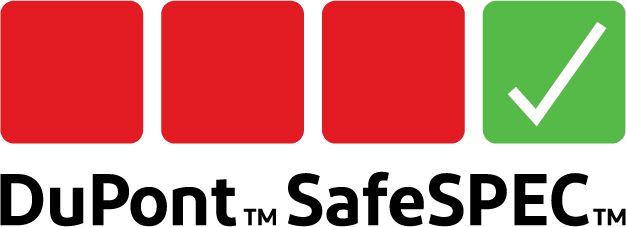HAZWOPER course at University of Rhode Island prepares students for the environmental sciences and services workforce
By Corey Briggs, CIH, CIT, FAIHA & Distinguished Lecturer of the American Industrial Hygiene Association; Senior Consultant,
Colden Corporation – Boston Regional Office
briggs@colden.com 617-259-0172

For the ninth consecutive year, I am co-teaching “Environmental Hazards, Risks, Response, and Safety” for the Geosciences Department of the College of the Environment and Life Sciences (CELS) at the University of Rhode Island, my undergraduate alma mater.
The comprehensive course helps prepare students interested in pursuing careers in environmental and/or occupational health and safety by providing them with extensive knowledge in EHS hazards, risks and controls in addition to hands-on experience with materials, equipment and supplies that are used in the environmental sciences and services sector. Designed to meet the training requirements of the Occupational Safety and Health Administration (OSHA)-required 40-hour Hazardous Waste Operations and Emergency Response (HAZWOPER) standard, students are required to attend lectures and engage in discussions, laboratory exercises, demonstrations and other hands-on activities, all leading up to their final exam/practical – a full hazardous waste site investigation drill. Students not only learn about EHS issues associated with hazardous waste site investigation, engineering and remediation, but also hazmat emergency response and EHS in the industrial and commercial sectors.
Students who successfully complete and pass the 13-week course earn their OSHA HAZWOPER Waste Site Worker certificate, their OSHA 10-hour Construction and/or General Industry certificate and several Federal Emergency Management Agency (FEMA) Incident Command training certificates. Having these certifications on their resumes provides students with a competitive edge as they enter the workforce.
A critical piece of the course includes education and extensive hands-on training with personal protective equipment (PPE), including the different types of PPE and levels of protection, the information that’s needed to adequately select the right PPE for a given scenario (e.g., permeation data and other considerations like durability, heat stress, need for respirator etc.) and how to properly don and doff PPE.
With no formal equipment budget other than a small student equipment fee for expendables, we rely on the generosity of manufacturers, distributors, suppliers and some of my clients who have donated PPE and other supplies over the years. I estimate that since the start of the course in 2013, we have received over $75,000 worth of donated materials, equipment and supplies to support the class. These donations, including several PPE donations from DuPont through their Tychem® Trainer Advantage Program (TTAP), have been invaluable in helping students gain the practical skills they need to keep them healthy and safe as they prepare to enter the environmental sciences and services sector.
Check out our SafeSPEC™ product selector tool used by our TTAP community and others here – safespec.dupont.com, also available via app. For questions, please contact allie.fletcher@dupont.com.
A few hard miles
By Michael Halliwell M. Eng., EP, P.Eng., Senior Environmental Engineer, Thurber Engineering Ltd.

Back in 2008, I lost a co-worker to cancer. The next year, the local cancer foundation launched an annual two-day cycling fundraiser (currently called the “Enbridge Tour Alberta for Cancer”) in the foothills of Alberta, Canada. As an avid weekend warrior (though somewhat chunky cyclist), I signed up in honor of my co-worker. It was a wonderful event and especially touching personally, as the initial route followed part of one of the last trips that my co-worker took to see family before he passed.
Many years have gone by and I continue to do the event each year…even as a virtual event during the COVID pandemic. I also tend to add unique challenges to my event each year to see if I can raise a few extra dollars for the cause. In the past, these challenges have included using a 38-pound full-suspension mountain bike for the usual ~230-kilometer/140-mile event; doing the event on a handcycle to support a friend who broke his back; and putting my legs/face/head under threat of a razor (and shaved legs feel weird, guys. I can now tell you that from experience!).
In recent years, forest fire smoke has been a concern, so that got me thinking. My work also puts me in contact with several things that can be carcinogenic, especially radon, silica dust, asbestos and light hydrocarbons/solvents like benzene and toluene, so I decided to do my 2021 event while raising awareness about lung cancer concerns. That led to an interesting challenge. I started exploring the idea of doing the ride while kitted up with respiratory protective equipment (RPE). Fortunately, I had some enthusiastic support from a PPE manufacturer and “Team Hazmat” was formed. With their help, I was set up to ride in an unusual way: in full day glow green cycling kit and wearing a powered air purifying respirator (PAPR).
Thanks to COVID, last year’s event was planned to be run as individual or cohort rides that were coordinated on a single day in August 2021. I got to work planning my route and getting my butt on the bike for training. Thankfully, the RPE support came in early, so I was able to get in a lot of training (both indoor and outdoor) in the gear before the main event. I certainly turned a lot of heads (even in a pandemic, where masks had become the norm) and I can personally vouch for the effectiveness of a PAPR, even when riding through the summertime haze of forest fire smoke.
The event in August went off amazingly well. I took the “tour” part of the event title seriously and rode 104 kilometers (65 miles) from my home to a major tourist attraction in a (somewhat) nearby town. Believe me when I say that modern PAPRs can certainly keep up with a high level of exertion. I completed the total distance in under 3 hours and 15 minutes, which is a fairly brisk pace for a chunky solo rider. I had no issues with the PAPR keeping up with the higher demands of riding and my larger size. It ended up being a great event and raised funds for a good cause.
At this point, you may be wondering why I wrote this entry for The Glow Worm. There are a few reasons. First, to remind you to protect yourself. Occupational disease (especially related to asbestos) is still one of our biggest killers in construction. There are a lot of nasties out there—even if they don’t knock you down or kill you in the short term—that can cause long-term issues, such as lung cancer. The old adage “what doesn’t kill you makes you stronger” isn’t always true. Sometimes it just waits to kill you later. Second, I want to raise awareness that our modern RPE is good…dang good, in fact. It is more comfortable in the long haul, can keep up with higher demands and can keep you better protected than a lot of the RPE that came before. If your hazard assessment says you need it, wear it! There’s no excuse these days. Finally, I want to encourage you to support your local charities that deal with things like cancer. Be safe out there, folks.
Hazmat on the go – Transportation regulations: Explosives
By Kathryn Novelli, Senior Marketing Analyst

Handling and transporting hazardous materials are the reality of a modern and dynamic supply chain. Whether the hazardous cargo is a final product destined for market or a byproduct of the production process that must be disposed of, hazardous materials transportation remains a necessary part of contemporary commerce.
Traveling with hazardous materials is serious business and maintaining safety is of the utmost importance. To help workers stay safe, the United States Department of Transportation (DOT), established in 1966, and its operating organizations oversee regulations and requirements for the safe transportation of hazardous materials.
The Federal Motor Carrier Safety Administration (FMCSA) was established within the U.S. DOT in 2000 in accordance with the Motor Carrier Safety Improvement Act of 1999. The primary mission of the FMCSA is to prevent commercial motor vehicle-related fatalities and injuries. The FMCSA works with federal, state and local enforcement agencies and oversees commercial drivers' license (CDL) administration, regulatory compliance, research and technology development and commercial motor vehicle operator assistance programs to improve the safety of commercial motor drivers, operations and vehicles.
Additionally, the Pipeline and Hazardous Materials Safety Administration (PHMSA), created in 2004, works to advance the safe transportation of energy and other hazardous materials to protect people and the environment. The PHMSA establishes national policy, sets and enforces standards, educates, conducts research and helps prepare the public and first responders to prevent and respond to hazmat incidents.
The FMCSA and PHMSA work in tandem to advise and enforce regulations in relation to the DOT’s nine classes of hazardous materials:
- Class 1: Explosives
- Class 2: Gases
- Class 3: Flammable Liquid and Combustible Liquid
- Class 4: Flammable Solid, Spontaneously Combustible and Dangerous When Wet
- Class 5: Oxidizer and Organic Peroxide
- Class 6: Poison (Toxic) and Poison Inhalation Hazard
- Class 7: Radioactive
- Class 8: Corrosive
- Class 9: Miscellaneous
The first stop on our Hazmat on the Go series is Class 1: Explosives.
Explosives include any chemical compound, mixture or device, the primary or common purpose of which is to function by explosion. Common explosives include gunpowder, fireworks and dynamite. Explosives are also found in automotive airbag inflators, special industrial tools, fire extinguishers and certain pest control devices. Regulations and law enforcement for explosives are primarily overseen by the U.S. Bureau of Alcohol, Tobacco, Firearms and Explosives (ATF), but when explosive materials in commerce are being transported, regulatory and civil enforcement authority is held by the PHMSA within the DOT, in conjunction with FMCSA regulations.
The DOT designates explosives as a Class 1 hazardous material, which is further categorized into six divisions, generally becoming less hazardous as the division number increases:
- Division 1.1: Explosives which have a mass explosion hazard
- Division 1.2: Explosives which have a projection hazard but not a mass explosion hazard
- Division 1.3: Explosives which have a fire hazard and either a minor blast hazard or a minor projection hazard or both, but not a mass explosion hazard
- Division 1.4: Explosives which present no significant blast hazard
- Division 1.5: Very insensitive explosives with a mass explosion hazard
- Division 1.6: Extremely insensitive articles which do not have a mass explosion hazard
These classifications are used for cargo labeling and vessel placarding, required by the DOT.
DOT regulations for transportation of explosive materials differ by division. For example, motor vehicles containing Division 1.1, 1.2 or 1.3 materials are prohibited from parking on private property without the consent of the property owner, as well as parking on or near public, densely populated or frequently traveled areas, unless essential to a work operation.
In the case of accidents during transport, PHMSA advises on emergency response actions for fires, spills or leaks and first aid. Specifically, in the case of a cargo fire, all traffic must be stopped and the area must be cleared for at least 1,600 meters (1 mile) in all directions until the hazard is neutralized.
Fortunately, thanks to the diligent efforts of government regulators, enforcers and hazmat transporters, accidents related to the transportation of explosives in the United States and Canada are extremely rare and have mostly resulted in minor injuries. For example, in Ontario, Canada in 1998, a truck transporting 18,000 kilograms (40,000 pounds) of blasting explosives went off the road and immediately started a fire. About 35 minutes after the accident, the truck exploded, causing two minor injuries, damaging several houses and throwing fragments of the truck as far as 2,740 meters (5,800 feet). Firefighters were in contact with the Canadian Transport Emergency Centre (CANUTEC), who advised against approaching the scene. The driver’s warning and the explosive placards on the truck helped inform the decision to evacuate the area, which prevented fatalities and serious injuries.
Knowledge of transportation regulations and best practices for hazardous materials is paramount to keeping people safe on and off the road. Through diligent adherence to safety standards and awareness of emergency response procedures, hazmat transporters can help keep roads safe for everyone.
To learn more about how to protect yourself from different hazardous materials and to find out which DuPont products offer suitable protection for your needs, visit safespec.dupont.com.
Do you have a story you’d like to share about transporting hazardous materials? Email kathryn.novelli@dupont.com to discuss being featured in our next edition of The Glow Worm.
Hazmat through history – Sulfuric acid
By Daniel Hammel, North America Marketing Lead Chemical Industrial

After sulfuric acid was first discovered in the eighth century by alchemist Jabir ibn Hayyan, it was dubbed “oil of vitriol.” Vitriol is a sulfate of various metals, such as copper and iron. The newly discovered acid was produced by roasting iron vitriol in an iron retort. The ancient term “vitriol” lends itself to the literary term of the same name, meaning “bitterly harsh or caustic language or criticism.”
The use of sulfuric acid was limited in its early history. Advancements in the production of sulfuric acid helped make it more popular and expanded its use in various applications. In the 17th century, Johann Glauber heated a combination of sulfur and potassium nitrate with steam to produce sulfuric acid. At this time, sulfuric acid was mainly used as a cleaning agent. By the 18th century, John Roebuck developed the lead chamber process, which allowed sulfuric acid to be produced more easily and less expensively. Production increased in the 1760s as its usage as a fabric dye was popularized. Sulfuric acid could be used as both a bleaching agent and as a way to dissolve indigo to produce a blue dye. In 1831, Peregrine Phillips developed his patented contact process for producing sulfuric acid, which is still used today.
While there have been and continue to be many virtuous uses of sulfuric acid across the globe, some individuals with nefarious intentions have taken advantage of sulfuric acid’s properties. English serial killer John George Haigh murdered at least six people between 1944 and 1949. Not wanting to pay for his crimes and believing that the absence of bodies would clear him of any murder charges, Haigh dissolved his victims’ bodies in vats of concentrated sulfuric acid. This earned Haigh the nickname the “Acid Bath Murderer.” Haigh’s plan didn’t work. A jury convicted him of the six murders, and he was executed by hanging in 1949.
Today, sulfuric acid is one of the most commonly used chemicals in the world. Sulfuric acid is used to produce a vast array of products. It is most commonly used in the production of fertilizers, but it is also used to produce pharmaceuticals, detergents, pigments, fabrics and paper, to name a few. It remains such an important commodity that a nation’s production of sulfuric acid is used as an indicator of that nation’s industrial strength.
The Centers for Disease Control and Prevention (CDC) advises that exposure to sulfuric acid can be destructive to the skin, eyes, lungs and teeth. Severe exposure can even result in death. For DuPont Personal Protection solutions that provide protection against sulfuric acid, please visit SafeSPEC™.
Products and/or sales questions?
Share your stories, tips and tricks.

Resource library
Find technical information, videos, webinars and case studies about DuPont PPE here.


